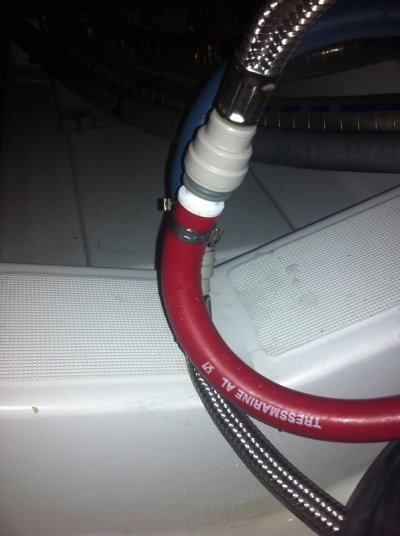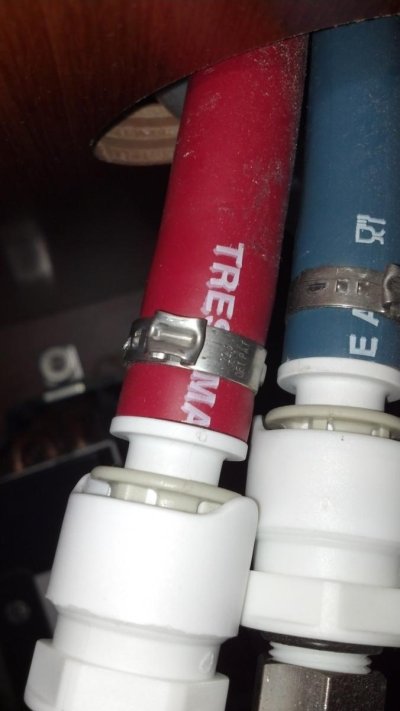rclarke246
Senior Member
- Joined
- Mar 17, 2014
- Messages
- 450
- Location
- USA
- Vessel Name
- Lady Di
- Vessel Make
- 2012 Beneteau Swift Trawler 44
Is this the style of clamp on the pipe?
HCL0500 - HydroPEX HCL0500 - 1/2" Stainless Steel Clamp (100/bag)
No, mine do not look like the one in the link. That must be the "double eared" style referenced by C lectric?
Mine has a more simple and aluminum look to it.
I have "suggested" to the dealer that the installed fitting system, as installed, is looking unreliable.
I plan to switch on the water heater and apply the pressure that the "city" water hook-up will provide, as suggested in an earlier post.


